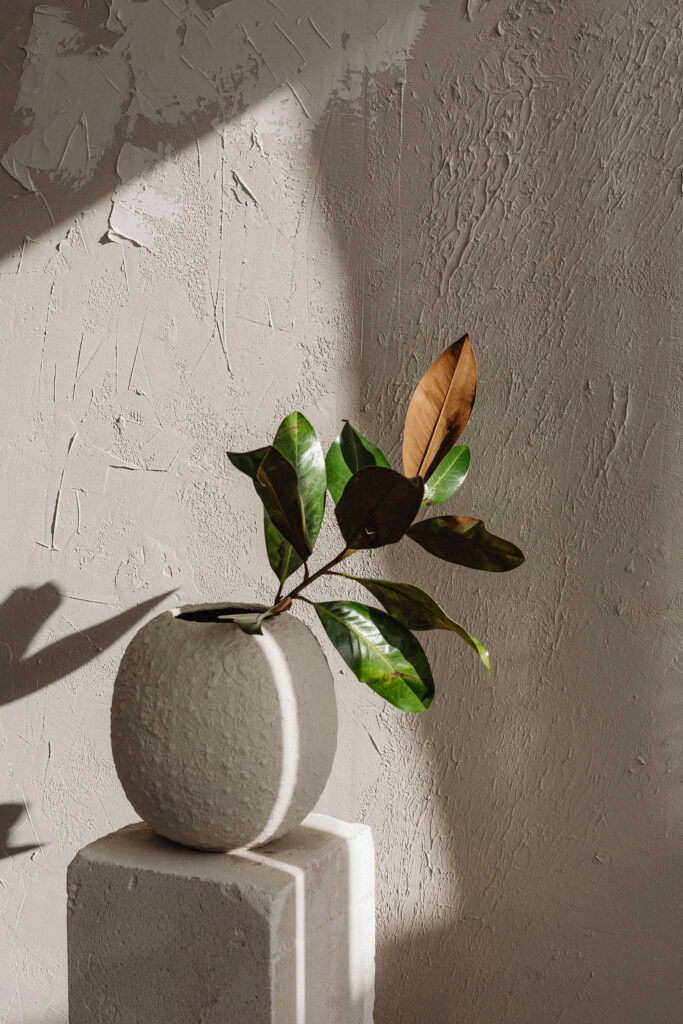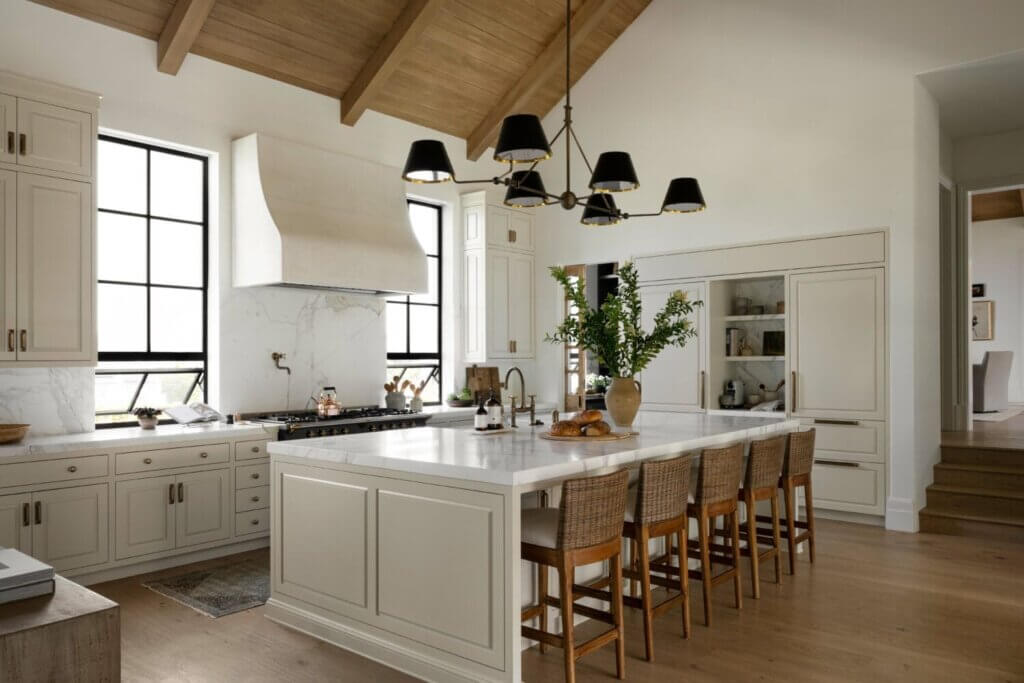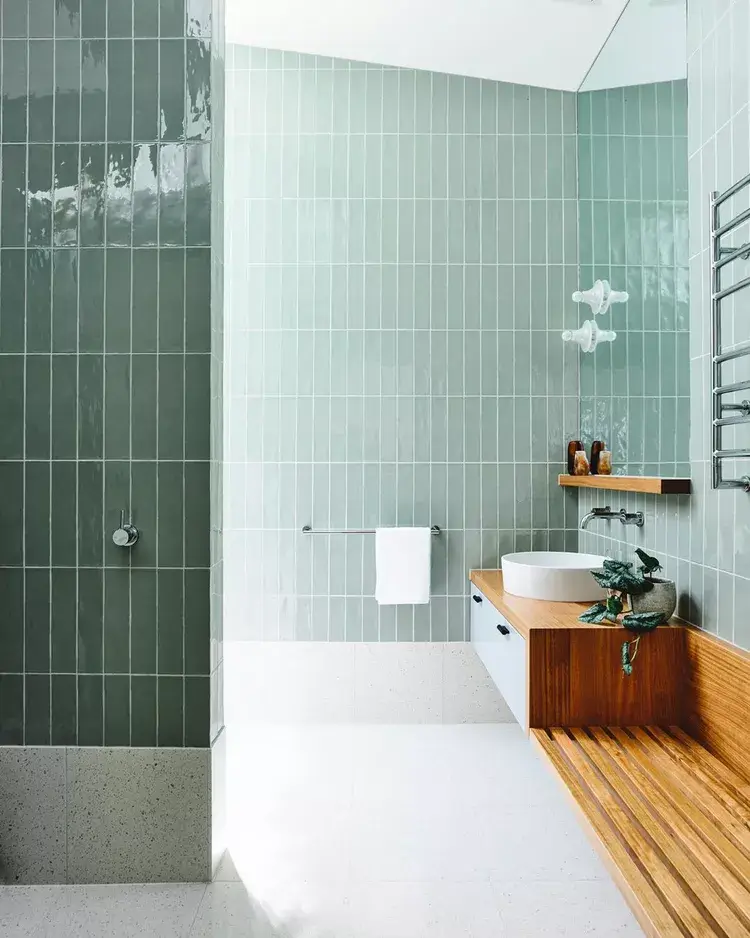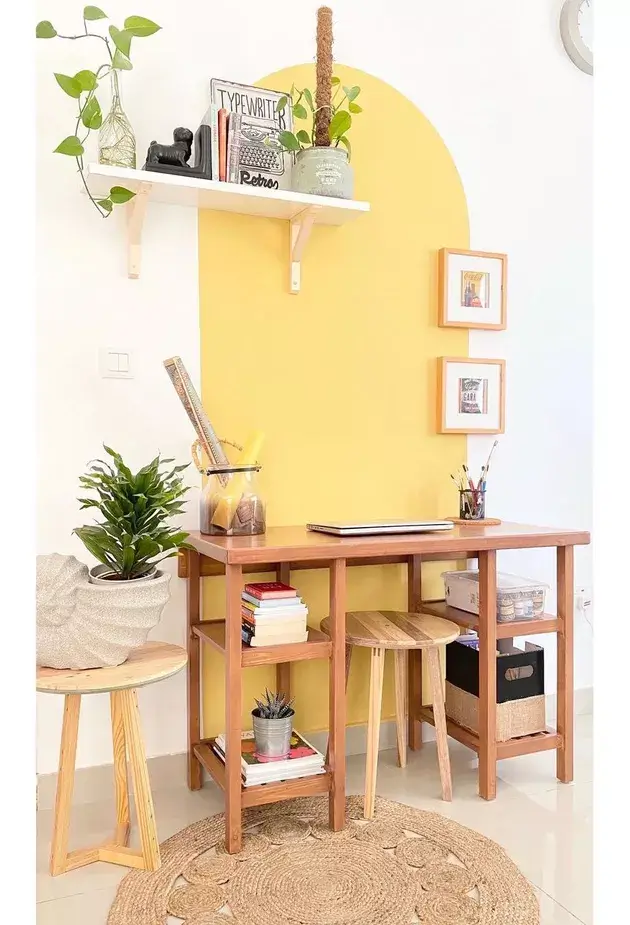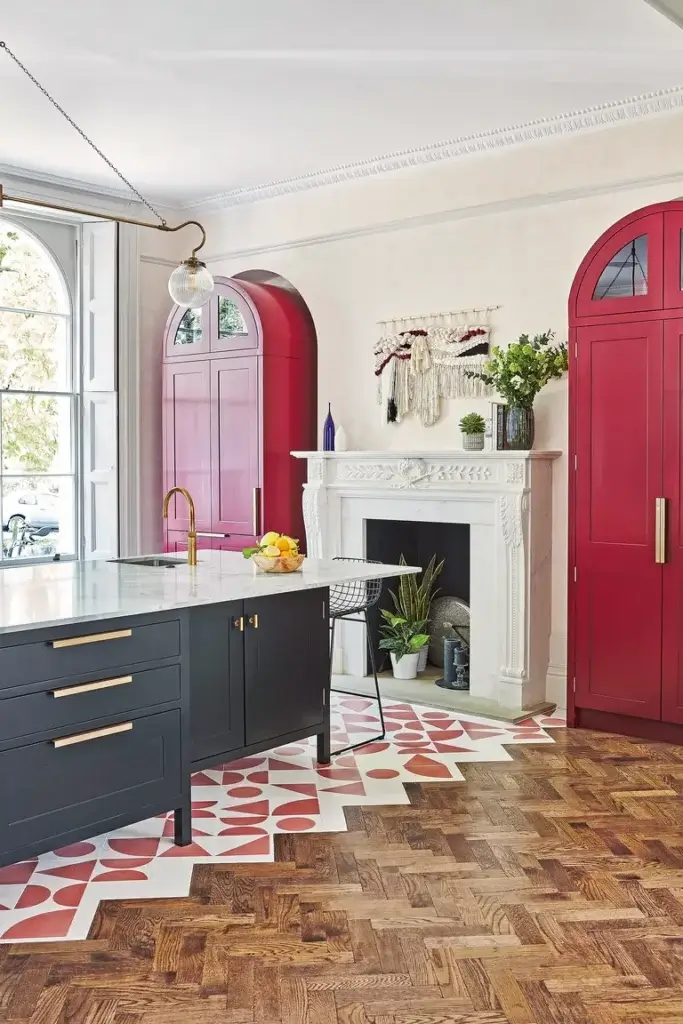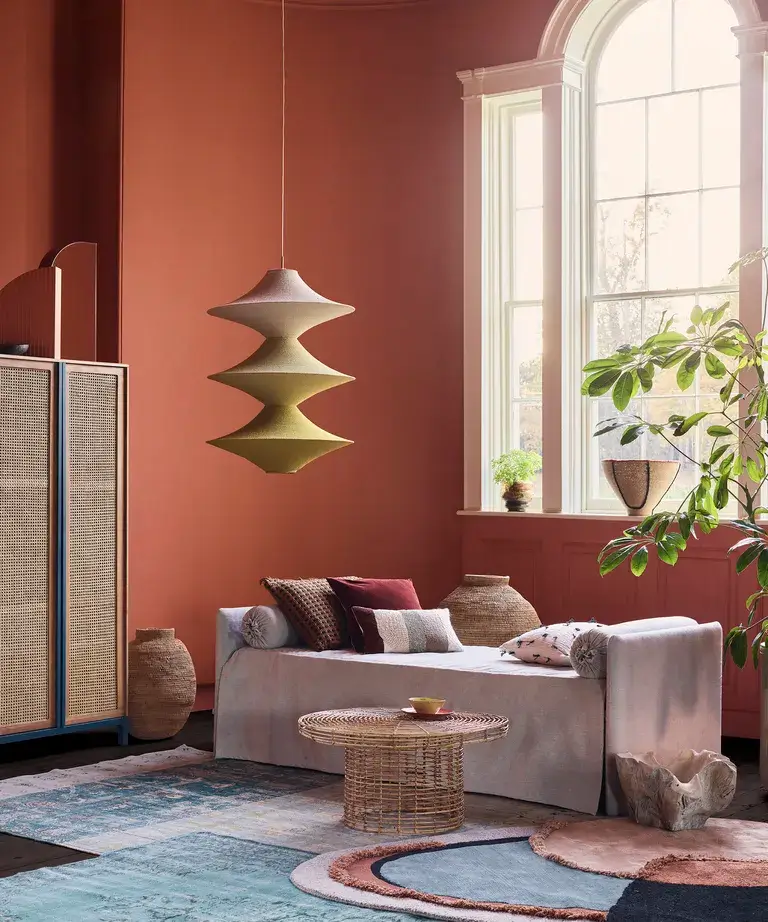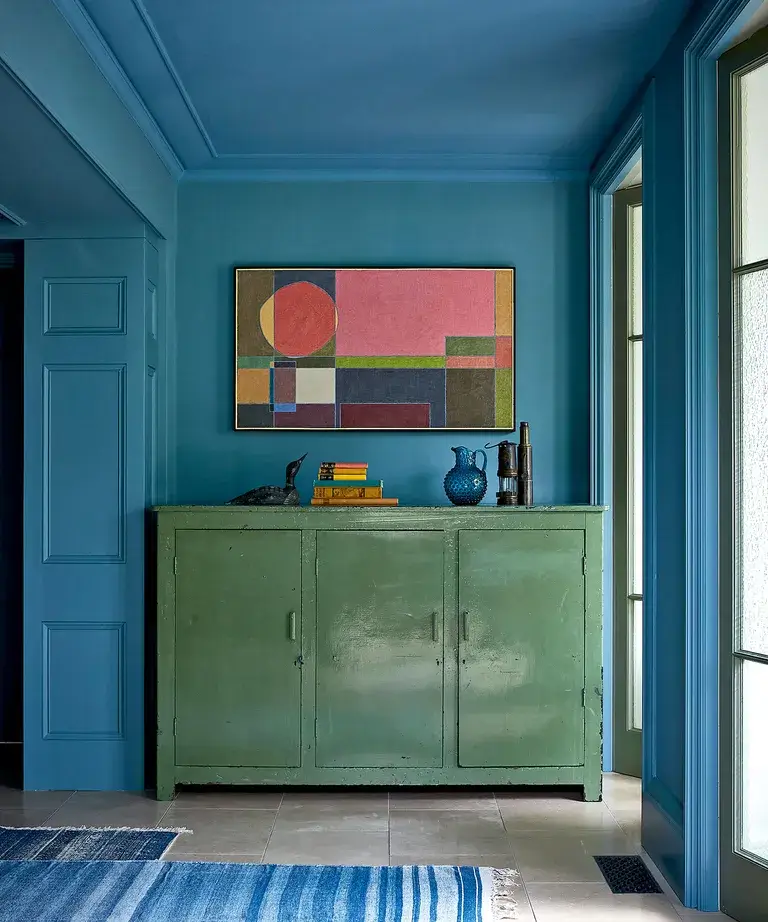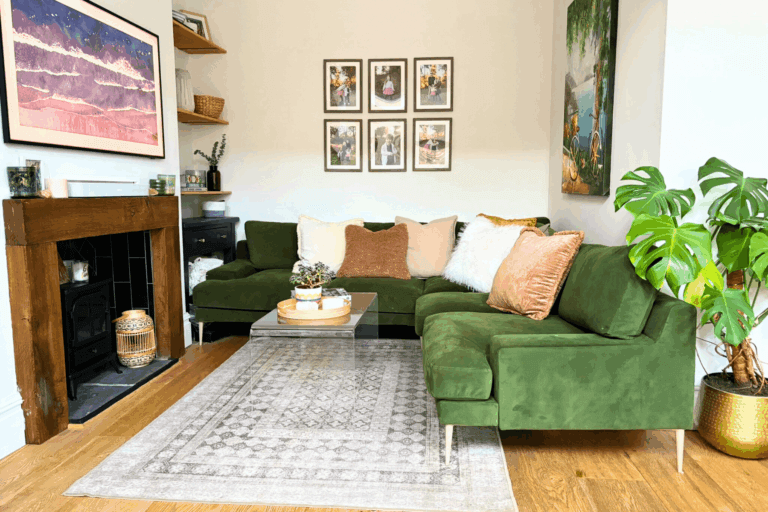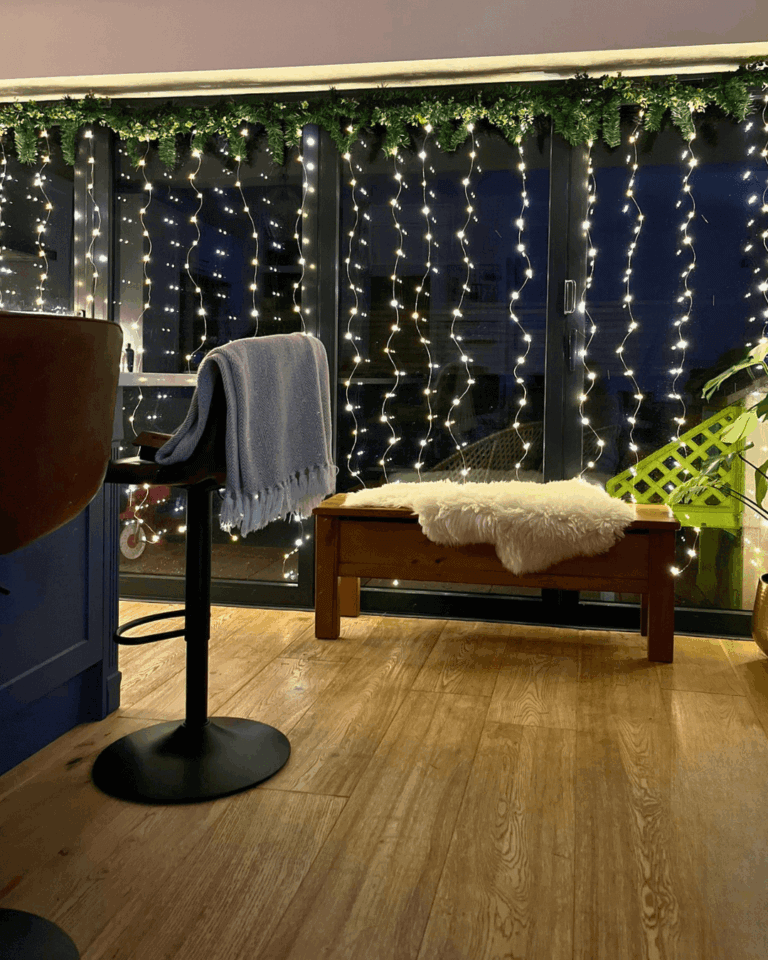Using Colour Psychology in Interior Design
Have you ever walked into a room and felt instantly relaxed or suddenly energised? If so, you’ve experienced how colour can influence our emotions. This magic is known as the psychology of colour in interior design.

What Exactly is Colour Psychology?
Colour psychology studies how different colours affect human mood and behaviour, exploring emotional responses influenced by factors like age and cultural background.
Colour Psychology looks at:
- Meanings of colours
- Emotional reactions to colour
- Factors influencing colour preferences
- Effects on mental health
- Influence on behaviors
- Use of colours for well-being
The power of colour on our mind and wellbeing has been recognised since the time of the Ancient Egyptians, who used it as part of healing rituals.
Artists and interior designers have long believed that colour can dramatically affect our emotions.
The Warm and Cool Spectrum
Colours in the red area of the spectrum, including red, orange, and yellow, are known as warm colours. These can evoke emotions ranging from warmth and comfort to anger and hostility.
On the blue side of the spectrum, cool colours like blue and green are often described as calming but can also evoke feelings of sadness or indifference.
Symbolic Colour Meanings
Here are some common symbolic meanings of different colours:
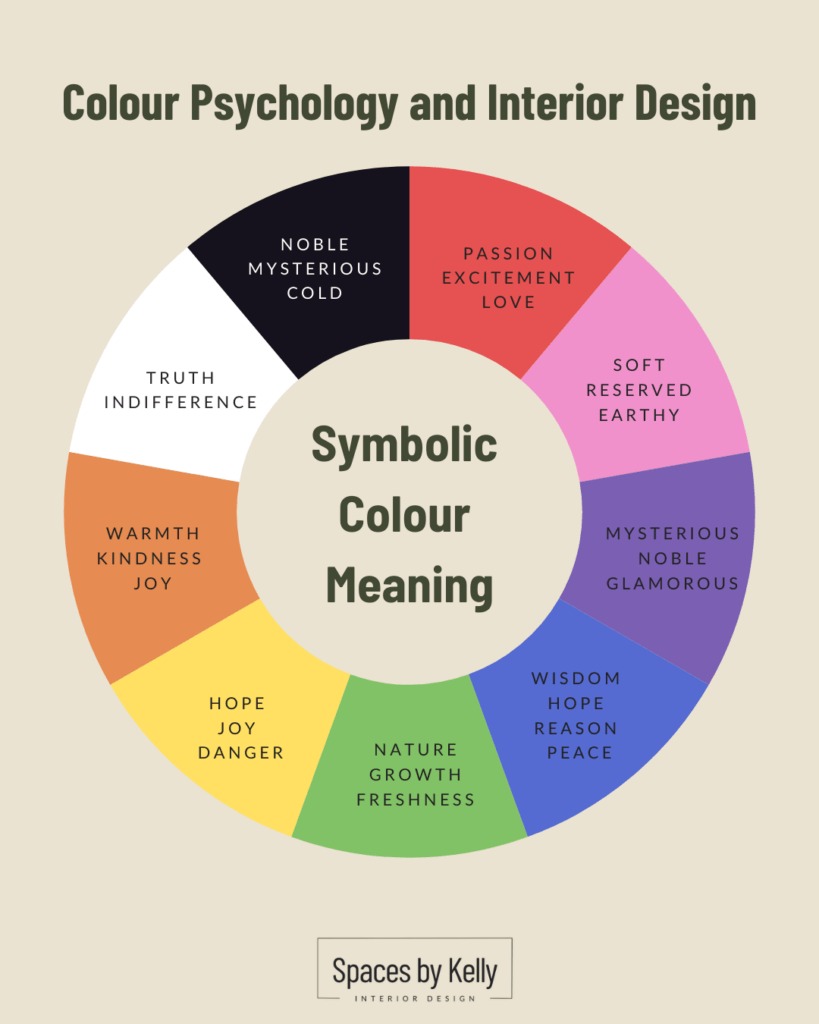
A 2020 study by Jonauskaite D, Abu-Akel A, Dael N, et al. surveyed emotional associations with colours from 4,598 people across 30 countries, revealing that certain colours have consistent emotional impacts:
- Red: 68% associated red with love
- Blue: 35% linked blue to feelings of relief
- Green: 39% linked green to contentment
- Yellow: 52% felt that yellow means joy
- Purple: 25% reported they associated purple with pleasure
- Brown: 36% linked brown to disgust
- Orange: 44% associated orange with joy
- Pink: 50% linked pink with love
The study indicates that color-emotion associations appear to have universal qualities. These shared meanings may play an essential role in aiding communication and would be a key factor in any interior design.
How to use colour psychology in interior design projects
I find it very interesting that the colours we decide to surround ourselves with can have such an impact on our mood and wellbeing.
When we spend more time at home, it is more important than ever to take a more thoughtful approach to our colour choices.
Let’s explore how colour psychology works in practice and how you can use this powerful tool to create spaces that look stunning and feel perfect.
Neutrals: Calm and Collected
Whites, beiges, and greys make a space feel calm and collected. They create a sense of openness and cleanliness, making them perfect for living rooms and bedrooms where you want to relax and unwind.
Neutrals are key to many timeless designs and remain very popular due to the calm, positive emotions they evoke.
Blues and Greens: Nature and Tranquility
Blues and greens are soothing colours, due to their association with the natural world. Think of the calming effect you feel when you see the ocean or walk through the countryside.
Incorporating these colours into your design is a great idea if you want to create a feeling of tranquillity or rejuvenation. Lighter shades of blue work really well in bathrooms and bedrooms. Rich shades of greens are a perfect choice for kitchens and living areas.
Yellows and Oranges: Energy
If you want to add more energy and warmth to your space, yellows and oranges are a great choice.
These vibrant colours create feelings of happiness and enthusiasm, making them ideal for spaces where you want to inspire creativity and conversation. They work well in a home office or dining room.
Reds and Purples: Dramatic
Reds and purples are powerful, dramatic colours that can arouse strong emotions.
Red is the colour of love. It increases energy levels and stimulates conversation, making it a good choice for social spaces such as dining and living rooms.
Purple is associated with luxury and creativity. It adds a touch of sophistication and drama to a space.
As these colours are powerful, it is best to use them carefully. For example, to create a focal point or accent piece.
Earth Tones: Warm and Inviting
Earth tones, such as terracotta, olive and mustard bring warmth and a sense of calm to a space. These colours are perfect for creating a cosy, inviting environment.
They work really well in any room but are the perfect choice in areas where you want to foster a sense of connection and comfort, like a family room or kitchen.
Personal and Cultural Color Reactions
Our reactions to colours are often deeply personal and culturally influenced. For instance, while white symbolises purity in many Western cultures, it represents mourning in many Eastern cultures. The influence of colour on mood can also be temporary, such as feeling calm when you enter a blue room but not maintaining that feeling over time.
How do you respond to colours?
While it’s great to understand the general effects of colour choices on emotions, it’s also important to consider your personal reactions to different colours. For example, some people feel red is a colour of love, while others feel it is a colour of anger.
Your space should be a reflection of your personality and colour preferences. It’s fun to experiment with different colours and find the perfect palette to make your home feel just right. You can do this by painting the walls or introducing an accent piece in a bold colour.
Final Thoughts
Colour psychology is one of the most powerful tools in interior design. By carefully selecting colours that align with the mood you want to create, you can transform any space.
Enjoy playing with colours and watch how your colour choices impact those who use the space. Will earthy tones in the kitchen entice family members to sit for longer after dinner, or will a zesty yellow in the home office make your work days more productive? I am willing to bet they will!
If you would like any further information on the psychology of colour in interior design or need help changing the mood of your space, please get in touch to book a consultation.


